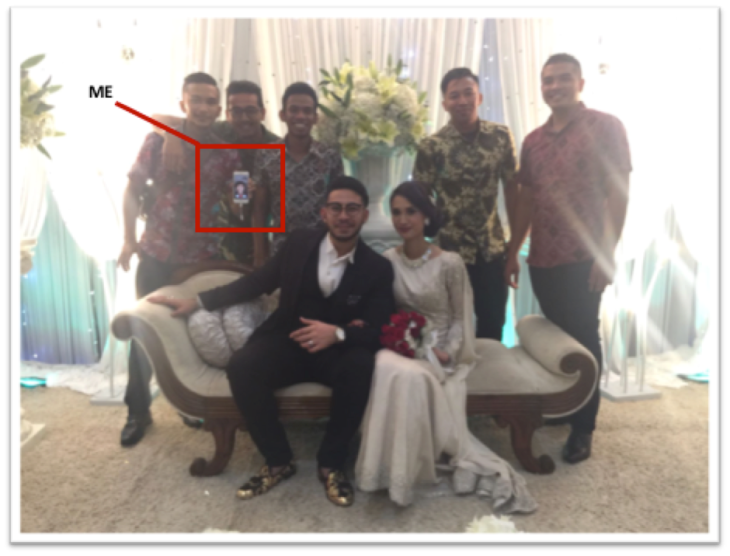The pervasiveness of technology in the 21st century has allowed the risk of technological determinism that has been embedded in most of us as we live in the digital age. In that, we fail to realize the wider implication that has bestowed upon us. This resonates along with how Thackara (2006) believes that there is no room for naiveté where we know new technologies have unforeseen outcomes. This presents an argument towards how technology may act as a double edged sword that most of us may be blinded to. The nature of this argument does not suggest the rejection of technology, but instead taking a step back to divulge in the very nature of technology.
The narrative behind extended self in the digital world presented by Belk (2014) exemplifies how technology drives digital consumption, ultimately impacting the nature of one self and nature of possessions. Dematerialization of possessions was one of the five changes in the digital world that he presented in his article. For instance, traditionally how we used to own music by buying CDs at the record store, while today, they are electronically downloaded (purchased) or even streamed through providers such as Spotify through a freemium model. This raises the question of ownership of such digital consumption objects (DCO) where they are merely binary which act as an intangible possession to oneself. This issue was brought to light by Bruce Willis’ attempt to allow his daughters to inherit his music collection on Apple’s iTunes (Child, 2012). Here, we are able to unlock the very nature of technology, in a sense that digital ownership may be questionable. This resonates along with other digital possessions that we may have such as photos, videos, messages etc. that may be stored in the cloud where we simply negate the wider implication that it may have.
The extension of this argument could be brought to the rise in the use of social media, where Belk (2014) presents this as part of Re-embodiment; the second change in the digital world. While traditionally, our identities only exist offline, the digital age has induced a challenge in maintaining multiple identities. From a personal experience, the author grew up in a conservative Muslim family, where restrictions of relationships are strictly adhered to. Therefore, (not so conservative) photos being posted online was kept private from family members until he decided to “clear” his pasts and share an “acceptable” persona to his family members and relatives. This was in parallel to how Odom et al. (2011 cited Belk, 2014) described one of the teenage informant’s reaction to his mother’s response to his photos and messages posted online. In that, we create multiple identities that serve different audiences. Belk (2014) argues the illusion of control of our multiple online identities extends the feeling of those identities being apart of us.
While it may seem trivial, the implication of this may be extended to our careers as well. It was reported that 60% of hiring managers screen their candidates online to ensure the “right” qualification of the job (Cain, 2016). This does not suggest that we should just privatize our presence online, but instead ensuring that our personas are maintained “clean”. This begs the question of authenticity of our true self, where Hood (2012 cited Belk, 2014, p.483) describes the “authorship of actions requires the illusion of a unified sense of self”. He further reiterates that this illusion brings us to please ourselves rather than the situation. In a sense, multiple identities are merely an illusion that we create to satisfy ourselves rather than please possible hiring managers. This raises ambiguity in such that we are blurring the lines between our offline and online personas as well. Again, this exemplifies the nature of technology in a way that we do not question how, in any way, would simply having a social media profile, could implicate our lives.
While evidently the nature of this argument may be skewed, the purpose of this narrative does not suggest the rejection of technology. There is certainly enough evidence to support the celebratory discourse of technology. For instance, on Saturday morning, in Southampton, United Kingdom (U.K.), at about 1000hrs, the author attended a wedding that was held in Singapore at 1800hrs from over 10,000km away. The author presented himself at the wedding through FaceTime and congratulate the newlyweds on their blissful marriage (see Figure 1).

Figure 1: The author’s presence in a wedding held in Singapore from Southampton, UK, through FaceTime
With the development of technology, it makes it possible for one to be at two places at once. It was only once upon a time in a science fiction movie (or novel) where this may seem impossible. But today, such developments may seem frivolous to us. While this may only be one in a million of evidences of the celebratory discourse of technology, the above critical discourse of the risk of technological determinism hope to question the true nature of technology.
References:
Belk, R.W., 2014. Extended Self in a Digital World. Journal of Consumer Research, 40(3), pp.477–500. Available at: http://jcr.oxfordjournals.org/content/40/3/477.abstract.
Cain, Á., 2016. 60% of hiring managers look up candidates online — here’s how to make sure your Facebook profile doesn’t cost you a job. Business Insider. Available at: http://uk.businessinsider.com/how-to-make-sure-your-social-media-accounts-dont-cost-you-a-job.
Child, B., 2012. Bruce Willis to fight Apple over right to leave iTunes library in will. The Guardian. Available at: https://www.theguardian.com/film/2012/sep/03/bruce-willis-apple-itunes-library.
Thackara, J., 2006. In the Bubble: Designing a Complex World, MIT Press. Available at: https://books.google.com.sg/books?hl=en&lr=&id=yuM68Q8WJUIC&oi=fnd&pg=PR7&dq=in+the+Bubble:+designing+in+a+complex+world&ots=G4vISI6v11&sig=xufkCYC8SIEEOXJL-6F8pSngDEo#v=onepage&q=in the Bubble%3A designing in a complex world&f=false.


